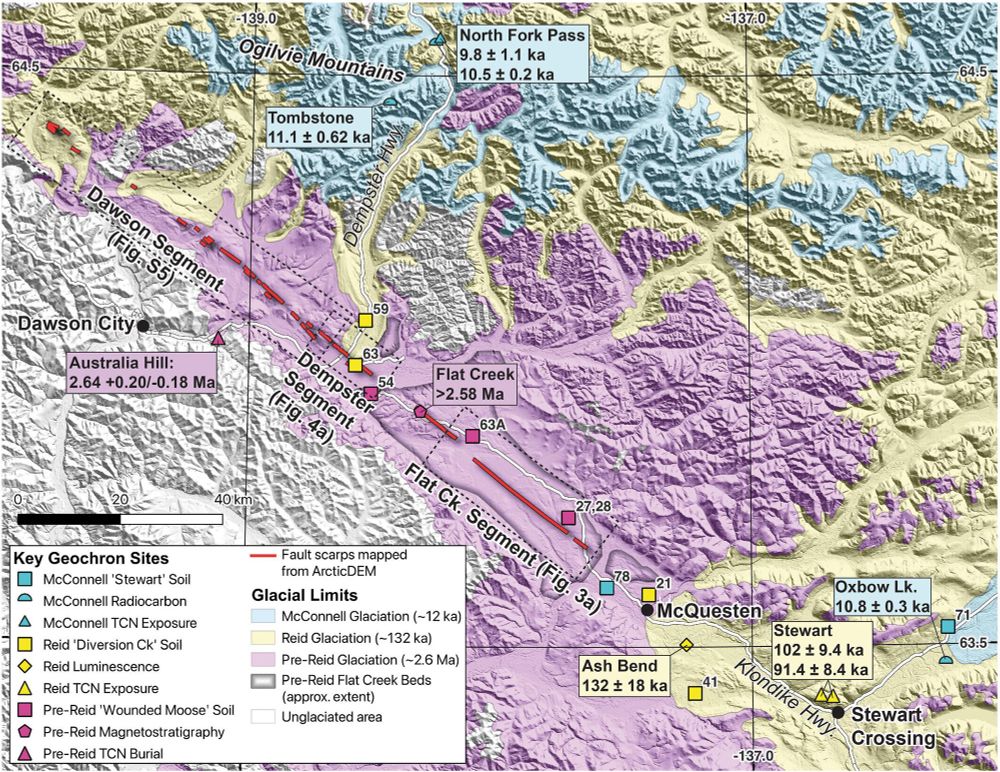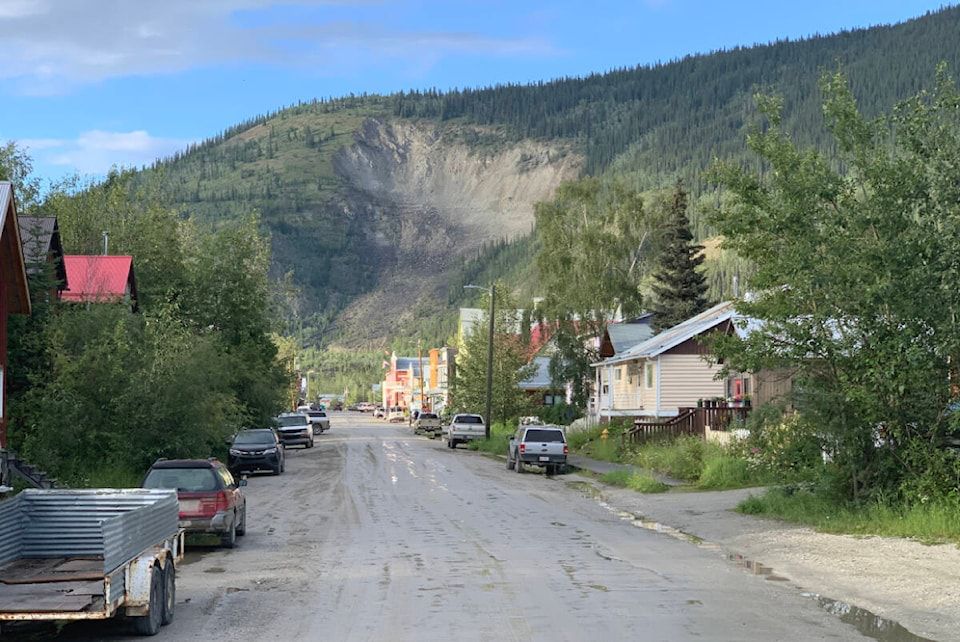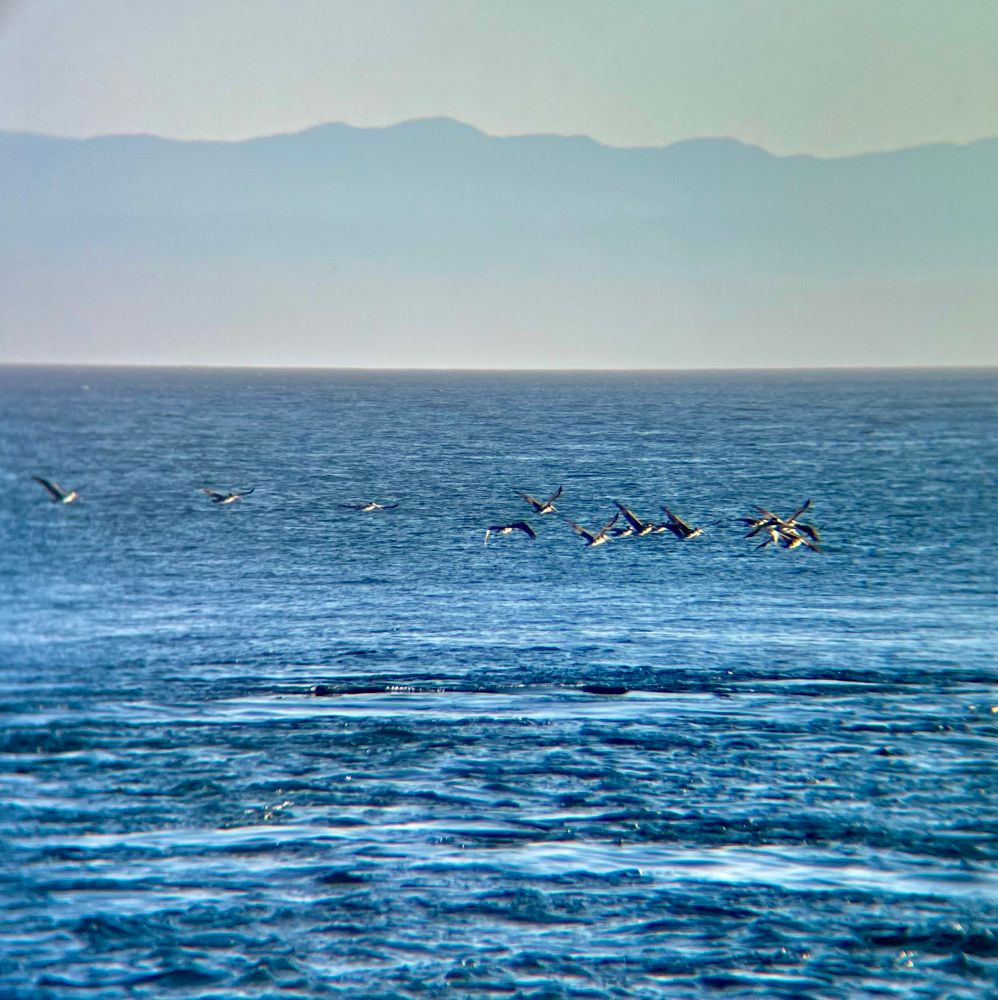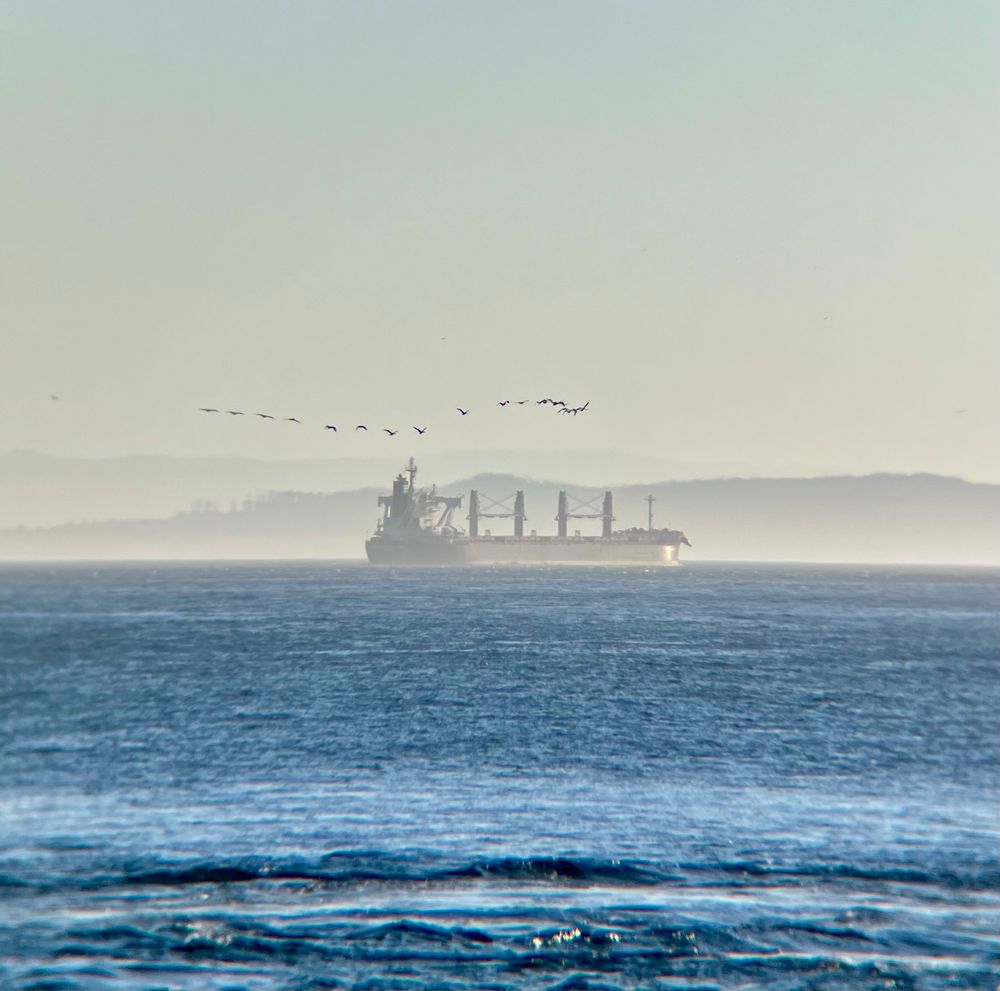
Edwin Nissen
@faultydata.bsky.social
Professor/Canada Research Chair in seismology in Victoria BC 🇨🇦. Earthquakes, active tectonics, remote sensing. Proud cat dad.
Was sorting out some old photos and came across this classic from a final exam a couple of years back

November 1, 2025 at 7:55 PM
Was sorting out some old photos and came across this classic from a final exam a couple of years back
Spot the drone 👀 Our third visit to Quesnel BC where we’ve been mapping deformation of the aptly-named “Big Slide” using drone lidar. Last year, you could walk along that road! Expert piloting skills by @thatfaultguy.bsky.social

October 8, 2025 at 3:53 AM
Spot the drone 👀 Our third visit to Quesnel BC where we’ve been mapping deformation of the aptly-named “Big Slide” using drone lidar. Last year, you could walk along that road! Expert piloting skills by @thatfaultguy.bsky.social
Yep, the USGS epicenter is close to a N-dipping normal fault clear in the topography at the west end of the Simav graben. This figure shows it better than the rather lame Trump-era USGS maps. Shouldn’t be a great surprise given some of the large EQs in the 1960s and 70s along strike to the E.

August 10, 2025 at 6:23 PM
Yep, the USGS epicenter is close to a N-dipping normal fault clear in the topography at the west end of the Simav graben. This figure shows it better than the rather lame Trump-era USGS maps. Shouldn’t be a great surprise given some of the large EQs in the 1960s and 70s along strike to the E.
There are broader implications for EQ hazards across western Canada, because this part of Yukon is unusual in having remained ice free during the most recent glaciation, preserving landforms from the early Quaternary. Were this fault in any other part of 🇨🇦, it would probably appear inactive. 3/3

July 18, 2025 at 6:04 AM
There are broader implications for EQ hazards across western Canada, because this part of Yukon is unusual in having remained ice free during the most recent glaciation, preserving landforms from the early Quaternary. Were this fault in any other part of 🇨🇦, it would probably appear inactive. 3/3
The Tintina fault hasn’t ruptured during the Holocene so is likely very late into its current earthquake cycle… but how late is a story for another day (requiring trenching). The biggest hazard posed is probably triggering of landslides rather than strong ground shaking per se. 2/3

July 18, 2025 at 6:04 AM
The Tintina fault hasn’t ruptured during the Holocene so is likely very late into its current earthquake cycle… but how late is a story for another day (requiring trenching). The biggest hazard posed is probably triggering of landslides rather than strong ground shaking per se. 2/3
Exciting new paper in GRL by freshly minted Dr. Theron Finley, who’s discovered evidence for big earthquakes with an unusually long recurrence interval (>10 ka!) on one of North America’s longest faults, previously considered inactive for many millions of yrs. 1/3

July 18, 2025 at 6:04 AM
Exciting new paper in GRL by freshly minted Dr. Theron Finley, who’s discovered evidence for big earthquakes with an unusually long recurrence interval (>10 ka!) on one of North America’s longest faults, previously considered inactive for many millions of yrs. 1/3
Rare sighting of brown pelicans (a flock of ~20 flying in formation) from McMicking Pt, Victoria #yyj. First time I’ve seen them in eight years living here!



July 17, 2025 at 2:43 AM
Rare sighting of brown pelicans (a flock of ~20 flying in formation) from McMicking Pt, Victoria #yyj. First time I’ve seen them in eight years living here!
Dusting off our lidar drone ahead of the summer surveying season @thatfaultguy.bsky.social @earthquakeandrew.bsky.social

May 31, 2025 at 12:29 AM
Dusting off our lidar drone ahead of the summer surveying season @thatfaultguy.bsky.social @earthquakeandrew.bsky.social
Another day, another small earthquake in the northern Cascadia forearc. Here it is on one of our @schoolshake.bsky.social seismometers in Victoria BC 🇨🇦

March 6, 2025 at 2:32 AM
Another day, another small earthquake in the northern Cascadia forearc. Here it is on one of our @schoolshake.bsky.social seismometers in Victoria BC 🇨🇦
Using InSAR together with instrumental seismology, Grace shows how several recent M 5–6 earthquakes occurred on previously unknown faults with little expression in the topography. This poses a big challenge for regional seismic hazard mapping efforts

March 6, 2025 at 12:32 AM
Using InSAR together with instrumental seismology, Grace shows how several recent M 5–6 earthquakes occurred on previously unknown faults with little expression in the topography. This poses a big challenge for regional seismic hazard mapping efforts
Clear P and S wave arrivals recorded by @schoolshake.bsky.social at North Saanich Middle School here on southern Vancouver Island. No relation to the M 5 Sechelt earthquake ten days ago (120 km N… too far for a direct aftershock for an EQ this size)

March 3, 2025 at 5:25 PM
Clear P and S wave arrivals recorded by @schoolshake.bsky.social at North Saanich Middle School here on southern Vancouver Island. No relation to the M 5 Sechelt earthquake ten days ago (120 km N… too far for a direct aftershock for an EQ this size)
Tragically, there are tell tale signs in the geomorphology that the Herat region is underlain by active faults, that were not recognized prior to the disaster. Indeed, Afghanistan is often considered part of the stable Eurasia plate… but the 2023 earthquakes show that it is slowly shortening

February 25, 2025 at 3:07 AM
Tragically, there are tell tale signs in the geomorphology that the Herat region is underlain by active faults, that were not recognized prior to the disaster. Indeed, Afghanistan is often considered part of the stable Eurasia plate… but the 2023 earthquakes show that it is slowly shortening
Tragically there are tell tale signs in the geomorphology of active faulting underlying the Herat region, that were not recognized prior to this disaster. Indeed, Afghanistan is often considered part of the stable Eurasia plate… but the 2023 earthquakes imply that it is slowly shortening.

February 25, 2025 at 2:51 AM
Tragically there are tell tale signs in the geomorphology of active faulting underlying the Herat region, that were not recognized prior to this disaster. Indeed, Afghanistan is often considered part of the stable Eurasia plate… but the 2023 earthquakes imply that it is slowly shortening.
It was past my bedtime but picked up nicely by our SchoolShake seismic network

February 14, 2025 at 4:00 PM
It was past my bedtime but picked up nicely by our SchoolShake seismic network
Pleased to share a new paper on an interesting EQ in the remote Koryak highlands of far eastern Siberia. Its location appears influenced by an ancient geological suture that crosses the area. There are implications for seismic hazards in neighbouring parts of the cordillera such as Alaska & W Canada

February 3, 2025 at 10:29 PM
Pleased to share a new paper on an interesting EQ in the remote Koryak highlands of far eastern Siberia. Its location appears influenced by an ancient geological suture that crosses the area. There are implications for seismic hazards in neighbouring parts of the cordillera such as Alaska & W Canada
When 4 becomes 3: textbook example of “soft first storey collapse” as the US embassy in Vanuatu loses its ground floor in yesterday’s M 7.3 earthquake. Luckily it appears staff were out for lunch (acc. to the Guardian). This is my worst fear whenever I enter an older multi-storey here in Cascadia

December 18, 2024 at 6:28 AM
When 4 becomes 3: textbook example of “soft first storey collapse” as the US embassy in Vanuatu loses its ground floor in yesterday’s M 7.3 earthquake. Luckily it appears staff were out for lunch (acc. to the Guardian). This is my worst fear whenever I enter an older multi-storey here in Cascadia



